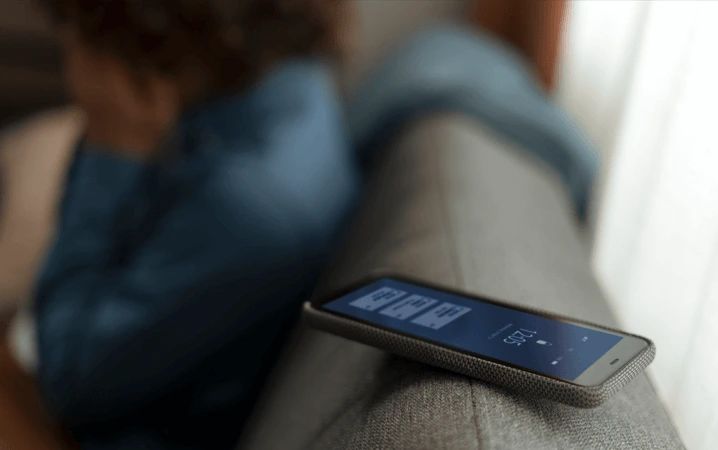What Happens When SIM Cards Go Bad?


SIM cards have played a central role in mobile communication since their introduction. These tiny chips are responsible for connecting your phone to your mobile carrier so you can make calls, send texts, and access data. Despite their small size, they’re essential to keeping your mobile life running.
Over time, however, SIM cards can stop working properly. Like many pieces of physical technology, they can become damaged, worn out, or affected by environmental conditions. When they do go bad, it can result in dropped calls, poor signal, or total loss of service.
As smartphones become more advanced, a new type of SIM has entered the scene: the eSIM, or embedded SIM. This digital alternative is becoming more popular for its convenience, reliability, and flexibility. Before diving into why you might want to make the switch, it’s helpful to understand how traditional SIM cards work, what can cause them to fail, and how they compare to eSIMs.
SIM Cards vs. eSIMs: What’s the Difference?
Traditional SIM cards and eSIMs perform the same essential function. Both store the information needed for your device to connect to a mobile network, link your phone number to your account, and authenticate your device. Despite these shared responsibilities, they differ in key ways.
Privacy and permissions
- Allow your phone to connect to a mobile network for calls, texts, and internet access
- Store your subscriber information, including your phone number and plan
- Enable you to switch carriers or plans when necessary
Differences
The most obvious difference is physical. A traditional SIM card is a small, removable chip that must be manually inserted into your phone. An eSIM, by contrast, is embedded directly into your device’s hardware and can be activated digitally.
This difference in design leads to greater convenience for eSIM users. With an eSIM, there’s no need to wait for a new card to arrive in the mail or fiddle with tiny trays. Switching carriers or plans can be done remotely, often within minutes. Another advantage is security. Since an eSIM is part of your phone’s internal components, it can’t be removed, lost, or physically tampered with.
What Causes SIM Cards to Go Bad?
Though SIM cards are durable to some extent, they are not indestructible. There are several common reasons they might stop working or perform poorly. Knowing these issues can help you recognize when it’s time to replace your card or consider switching to an eSIM.
Physical Damage
SIM cards are small and delicate. Even light pressure or frequent insertion and removal can cause scratches or bending. If the gold contacts on the SIM become damaged, your phone may have trouble reading it. Cracks along the edge or wear from repeated use are often signs that the card may soon fail.
Water and Moisture Exposure
Although many modern phones are water-resistant, their SIM trays often are not. If moisture seeps into the tray or the phone is exposed to humidity over time, the metal contacts on the SIM card can corrode. This corrosion disrupts the connection between the SIM and your phone’s internal reader, leading to errors or loss of signal.
Excess Heat
Leaving your phone in a hot car or in direct sunlight may seem harmless, but repeated exposure to high temperatures can be damaging. Excess heat can deform the plastic casing or even harm the chip inside. Over time, the stress from high temperatures may cause the card to malfunction.
General Wear and Tear
Even if a SIM card is handled carefully, it can wear out. The contact points can degrade with age, especially if the SIM is transferred between devices often. As the card ages, you may notice slower network performance, spotty coverage, or problems connecting to your carrier.
Manufacturing Defects
Occasionally, a SIM card may be defective from the beginning. This could be due to poor manufacturing standards, misaligned contacts, or subpar materials. These cards might work at first but show signs of failure relatively quickly. If you’re having issues with a new SIM, this could be the reason.

Signs That Your SIM Might Be Failing
Sometimes it’s difficult to tell whether your phone problems are related to the SIM card or something else. However, there are a few symptoms that strongly suggest the SIM is to blame.
- Your phone displays messages like “No SIM,” “SIM not detected,” or “Insert SIM” even though the card is properly inserted
- Calls are frequently dropped or text messages fail to send
- You experience poor or inconsistent mobile data even in areas with good signal
- Your device switches between signal strengths or network types without explanation
- The phone becomes warm near the SIM tray, which may indicate hardware issues
If you notice these issues, try inserting the SIM card into a different phone. If the same problems occur, it’s likely the card is damaged or faulty.
Why More Users Are Switching to eSIM
The convenience and reliability of eSIM technology are attracting more users every year. For those tired of dealing with broken SIM cards or frequent swapping between devices, eSIM offers a more modern solution.
Durability and Reliability
With no removable part, eSIMs eliminate many of the vulnerabilities of traditional SIM cards. There’s no card to bend, misplace, or wear out. The embedded chip remains protected inside your phone, making it much more durable in the long run.
Instant Setup
Need to activate a new line or switch carriers? With an eSIM, you don’t have to wait for a physical card. You can download your plan directly onto your device using a QR code or mobile app. This makes the process of getting connected faster and easier, especially for people who travel or use multiple carriers.
Multiple Plans on One Device
Another advantage of eSIMs is the ability to store more than one carrier profile. This is perfect for frequent travelers, remote workers, or anyone who needs separate lines for personal and professional use. Switching between plans can be done instantly without removing anything from your phone.
If you’re using a device that supports eSIM, companies like Maaltalk make the transition easy and convenient. And with the free MaaltalkNow app, you can activate plans, manage your travel eSIM profile, and explore local and international data options with our AI Recommendations feature. Plus enjoy 10% off when buying your eSIM through our AI Travel App MaaltalkNow.
Should You Make the Switch?
Traditional SIM cards have been essential for decades, but their limitations are becoming harder to ignore. If you’ve experienced SIM card failures, delays in plan activation, or the hassle of managing multiple cards, it might be time for an upgrade.
As long as your phone and carrier support eSIM, switching is usually straightforward. You’ll gain added convenience, improved reliability, and greater flexibility. And with services like Maaltalk leading the way, getting started with eSIM has never been easier.



